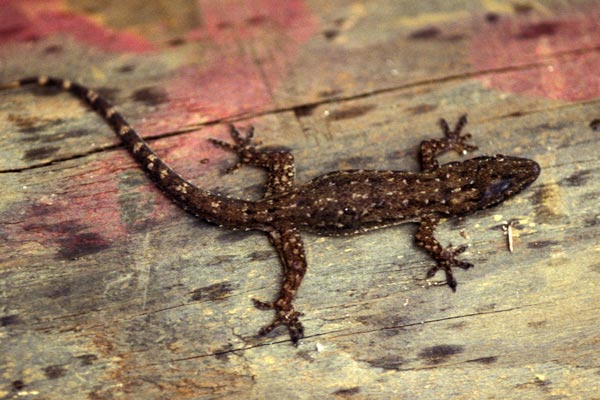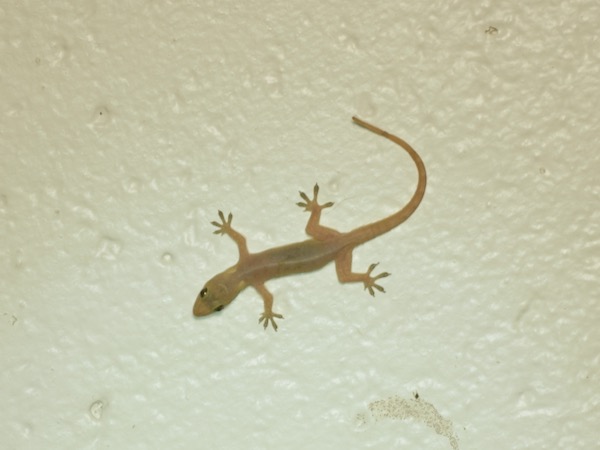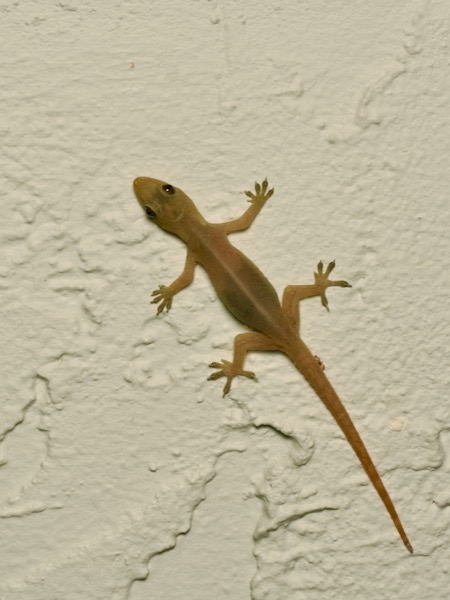Hemidactylus garnotii
—
Indo-Pacific House Gecko

This poor lizard was hiding from the elements under a log on a windy and drizzly cold day. If she were a warm and happy gecko, she would probably be much lighter in color. And I can say "she" with confidence, because Indopacific geckos are parthenogenetic -- they're all females, with virgin births galore.


I believe the longer, thinner bodies and heads of these geckos mark them as Hemidactylus garnotii rather than Hemidactylus mabouia, despite the latter species being present on these same buildings (in larger numbers).
Printed references:
- Ashton, R. E. Jr., Ashton, P. S. 1991. Handbook of Reptiles and Amphibians of Florida, Part Two: Lizards, Turtles, & Crocodilians, Revised Second Edition
- Bartlett, R. D., Bartlett, P. B. 1999. A Field Guide to Florida Reptiles and Amphibians
- Behler, J. L., King, F. W. 1979. The Audubon Society Field Guide to North American Reptiles & Amphibians
- Carmichael, P., Williams, W. 1991. Florida's Fabulous Reptiles & Amphibians
- Conant, R., Collins, J. T. 1998. Peterson Field Guide to Reptiles and Amphibians of Eastern and Central North America, Third Edition, expanded
- Crother, B. I. (ed.) 2017. Scientific and Standard English Names of Amphibians and Reptiles of North America North of Mexico, with Comments Regarding Confidence in Our Understanding, Eighth Edition
- Rogner, M. 1997. Lizards
- Smith, H. M., Brodie, E. D. Jr. 1982. Reptiles of North America: A Guide to Field Identification